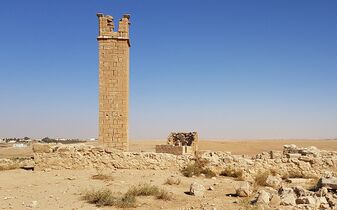Christianity and Ivan Karamazov's "Grand Inquisitor" Poem
Ivan Fyodorovitch Karamazov’s poem of the “Grand Inquisitor” in Book 5, Chapter 5 of “The Brothers Karamazov” has been interpreted by many authors as a condemnation on the part of Dostoevsky of the Roman Catholic Church, which he considered the Antichrist (Guardini 61). Msgr. Romano Guardini argues that, in order to do justice to the artist, one must seek to understand this section of the novel, albeit partly a “sacrilegious caricature” and “certainly an attack against Rome” (62), within the work as a whole and especially the character of Ivan (61-62).
In response to his brother Alyosha’s proposition of Jesus Christ crucified as the answer to Ivan’s “pessimistic and anarchistic conception of the world” (Guardini 65) (which the latter seeks to corroborate especially with so many stories of grievous suffering of children - see Dostoevsky 208-213), an understanding of Christ emerges from Ivan which is envisioned in such a way that is ultimately unrecognizable in light of the New Testament and excuses Ivan in his attitude toward reality (Guardini 64-65). The “Grand Inquisitor” poem, then, goes beyond an anti-Catholic tirade and “is an unveiling of Ivan’s soul and of his relations with God” (Guardini 62).
Real Christianity
Christianity touches human beings not only in elevated spiritual experiences, but embraces all aspects of daily life (Guardini 63). In fact, Msgr. Guardini points to the fact that one lives out one’s commitments (including, crucially, to Christ) precisely in what he calls “the everyday average” and “the center of action, the field---or one might say the work-shop of existence” (63). Moreover, the concreteness of Christianity over the centuries manifests itself fundamentally in the Church (Guardini 63).
Christ according to Ivan
Ivan’s vision of Jesus is at odds with the mission of the Christ revealed in the Holy Scriptures, fundamental to which is the renewal of creation, beginning in the midst of creation (Guardini 64). The figure presented by Ivan whom he calls Christ “does not have that holy relationship of love for the real world which purifies and renews it; he is simply compassion, bearing an invitation to leave the world” (Guardini 64). One could not say that this figure is “our righteousness and sanctification” (from 1 Cor 1:30, RSVCE), since it appears that, for following him in truth, he requires that, through “scores of years in the barren, hungry wilderness, living upon locusts and roots” (Dostoevsky 223), people achieve sanctity on their own (cf. Guardini 60 and 65).
Ivan’s conception of Jesus is cut off from the concreteness of life, from the concreteness of Christianity, and thus is not only incapable of effectively helping most of humanity, but in fact excuses Ivan to assume the role of the Grand Inquisitor who would know better than God (Guardini 66-67). Ivan’s attitude can be summarized as follows:
Justice must begin to reign here on earth. And in the fear that the eternal unanimity of the fervent army of mankind after the resurrection and the hosanna of heavenly hearts might one day invalidate his [Ivan’s] protest, he raises it now once and for all. He turns in his passport. This is equivalent to rejecting reality as much as it is a divine mystery, and in also rejecting the attitude of obedience and patience which accepts this reality as it is. (Guardini 66)
The severance of Ivan’s Christ from reality leads Msgr. Guardini to state that this figure “does not know his heavenly Father” and “could well be a supreme idealization of Ivan's parracidal will [sic]” (67).
Works Cited
Dostoevsky, Fyodor. The Brothers Karamazov. Translated by Constance Garnett, Edited by Susan McReynolds Oddo, Second edition, Norton, 2011.
Guardini, Romano, and Sally S. Cunneen. “The Legend of the Grand Inquisitor.” CrossCurrents, vol. 3, no. 1, Wiley, 1952, pp. 58–86, http://www.jstor.org/stable/24455664.
Hardon, John A. Stylites. Modern Catholic Dictionary, http://www.therealpresence.org/dictionary/adict.htm
Holy Bible, Revised Standard Version Catholic Edition, National Council of the Churches of Christ, 1966.

